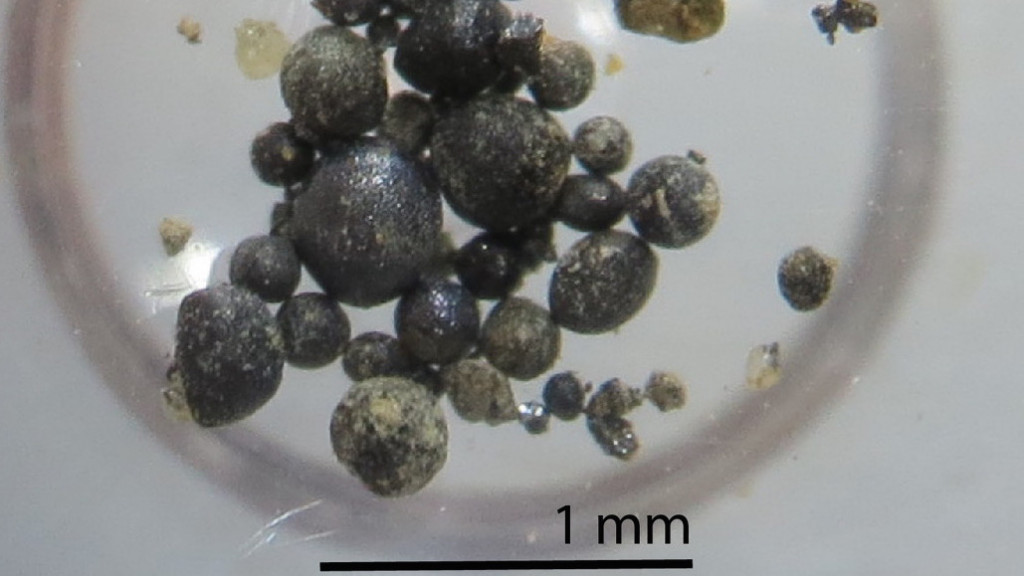BELAM: Big or small as dust, meteorites tell us a lot about our solar system
About 40,000 tons of cosmic dust reaches the Earth’s surface every year. Antarctica is a goldmine for this interstellar treasure because of its cold and dry climate as well as exposed stable landscape which has been accumulating material falling from the heavens for millions of years.
Background
All meteorites originating from the asteroid belt between Mars and Jupiter hold secrets that could unlock the mysteries of our solar system and birth and evolution of planets.
Since 2009, Belgian-Japanese scientific expeditions have stayed at Princess Elisabeth Antarctica research station in search of meteorites. This work has led to the collection of more than 1200 pristine specimens now conserved at the Royal Belgian Institute of Natural Sciences, making up one of the largest Antarctic meteorite collections in Europe today.
Although seemingly insignificant, the smaller tiny dust-sized meteorites (<2 mm) which fall on Earth provide us special insight into our solar system. Because of their small size, they contain information sometimes different and thus complementary to the classic larger meteorites one sees in museums.
The BELAM Project
These so called ‘micrometeorites’ are what scientists Steven Goderis and Matthias van Ginneken have been recently collecting near Princess Elisabeth under the BELAM project.
Using crampons, ice picks and snow poles, risking life and limb, they reached difficult ridges near the highest summit of the Sør Rondane Mountains and other challenging locations near the station in search of this cosmic dust. In places where the soil and underlying rock were frozen, they even had to use chisels and hammers to collect samples.
When back at Princess Elisabeth, with nothing more than a toothpick and an optical microscope, they begun the work of filtering out micrometeorites from kilos of sediment. This effort did not disappoint because they managed to find what may be in the order of 30,000 micrometeorites! Highly satisfying because to learn more about the planets, asteroids and comets, a considerable number of micrometeorites are required.
Now back at the laboratories of the VUB-ULB team in Brussels, Steven and Matthias will continue their research to help solve the mysteries of our solar system.
Why choose Princess Elisabeth?
‘We know the area very well and so we know the best places to search for micrometeorites. The location is extremely important, but of course the logistical support we receive at Princess Elisabeth is indispensable! This includes equipment (skidoo, climbing equipment, food, etc.) and top notch field assistance from Alain Hubert and our Swiss field guide Raphael Mayoraz.’ Dr. Steven Goderis, VUB
Meet the BELAM Team
Dr. Steven Goderis is a geoscientist working at the Vrije Universiteit Brussel (VUB) where he develops and applies a toolbox of elemental and isotopic proxies to answer Earth science questions. Since completing his PhD on impact cratering and asteroid showers, his research has been oriented towards early Solar System evolution, meteorite parent body processes, and global changes throughout the Earth’s history. Since 2009, Steven has been involved in the recovery of meteorites from the blue ice fields surrounding the Sør Rondane Mountains of Eastern Antarctica. Thanks to the Baillet Latour Antarctica Fellowship and BELSPO funding numerous micrometeorites found concentrated at Antarctic mountain tops in 2012 and 2018 will be keeping him and his team busy for many years to come.
Dr. Matthias Van Ginneken is a scientist from the Université libre de Bruxelles (ULB) who has expertise in the petrology and geochemistry of extraterrestrial material, but more precisely, that of micrometeorites (or cosmic dust). He identifies, classifies and analyzes micrometeorites using a wide range of analytical techniques. His main achievements include the study of “giant” unmelted chondritic micrometeorites. In parallel to this work on micrometeorites, he discovered and first described aggregates of meteoritic ablation spheres from Antarctica. His research led to the development of the first weathering scale for micrometeorites, which is useful to any micrometeorite researcher. His current work focuses on the study of a micrometeorite collection recently discovered in Wideroefjellet, Antarctica.
Author: Lisa Benedetti

